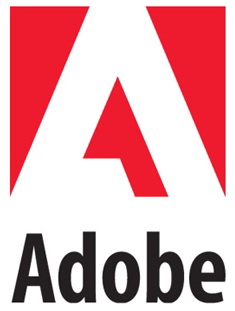
Adobe releases AIR 2 and Flash Player 10.1 betas
Today, Adobe has made the betas of AIR 2 and Flash Player 10.1 available for download for Windows, Mac and Linux.
The big features in AIR 2 were shown off at Adobe MAX in October, and they include: Support for USB mass storage devices, support for multi-touch and gesture-based input, improved support for local peripherals and native application processes, improved performance, and peer to peer and UDP networking.

Clever Adobe compilation trick sneaks Flash apps onto iPhone
Up to now, Apple's prohibition against anyone's runtime modules from appearing on its iPhone without authorization has been one of two central reasons that Adobe's Flash video and Flash platform have not made their appearance there -- the other reason being simply that Steve Jobs doesn't like it.
But at its annual MAX developers' conference in Los Angeles this week, Adobe's engineers unveiled a surprise: It's planning a public beta release of Flash Professional CS5 that will go through a new and unique set of hoops to enable developers to write or export apps built for the Flash runtime, to run on the iPhone as native apps. The new Flash Pro will use a mechanism for Flash application developers to deploy their apps on the iPhone anyway, even without the Flash mobile runtime.

Yahoo, Apple, Adobe, others named in Eolas patent lawsuit blitz
It's the same technology that was at the heart of a news-making patent suit against Microsoft: the patent held by Eolas Technologies that defines how a Web browser plug-in can activate functionality. A trio of Eolas patents was upheld under scrutiny in 2005, resulting in a battle in the nation's higher courts over whether Microsoft owes someone else for the right to use what could essentially be described as an "on-switch." It was a battle that brought a premature, if welcome, end to the marketing push for ActiveX.
But the final round of that fight never played out, as Eolas and Microsoft settled for an undisclosed sum, just as Microsoft won the right to argue the invalidity of Eolas' patents anyway. Since those arguments were never made, the 2005 decision upholding their validity stood.

McAfee makes strides in the DRM business with Adobe partnership
On the surface, it might seem that a company whose principal business is malware detection and eradication would eschew the thought of associating itself directly with digital rights management technology. But the job of protecting one's assets in an enterprise setting, more than ever before, directly involves being able to identify to whom an asset belongs.
For that reason -- among some others, as you'll see in a moment -- commercial anti-malware software provider McAfee this morning announced its partnership with Adobe for the distribution of data loss prevention (DLP) technology. DLP is a more politically correct, socially conscious phrase for the category of software that protects data against theft and misuse. In a way, DLP leverages much of the existing technology base that McAfee had already built up for itself for malware detection, including critical patents for data file fingerprinting including this one. Ostensibly, such a patent refers to the ability for an anti-malware program to detect infected files within encrypted and packed structures, especially when the encryption can almost completely obfuscate a Trojan file's signature.

Will Omniture do for Adobe what analytics failed to do for Microsoft, Yahoo?
Two years ago, as Betanews reported at the time, a security engineer testing Adobe's CS3 Web content creation suite for Mac discovered to his surprise that the code it was generating sent data over a network back to a very odd address. It was masked to look like a local network address, with the usual "192.168" prefix, but it used a capital "O" instead of a zero. As it turned out, the address 192.168.112.2O7.net was registered to Omniture, a Web analytics company with which Adobe was apparently doing some interesting business.
Only after the engineer publicly discussed his discovery did Adobe come clean about the fact that yes, CS3 and Flex-based applications were transmitting data back to an analytics company. "Omniture is a client-based analytics platform that uses information stored in both JavaScript variables and the user's cookie to track a user's progress through a site, giving business insight into how to create better user experiences," the company's admission read.

Adobe Flash in a race against Silverlight for the most DRM
Largely by virtue of its support from YouTube, which some say supplies four-fifths of the Web's streaming video, Adobe Flash is the de facto delivery standard for video through Web pages. While content creators have been urging Google and other video hosts to implement better controls over how unauthorized content can become so freely distributed, Adobe is now working on a way to enable those creators to post or host their own Flash video, in a way that they and only they are in control of the distribution process -- including, who gets to see those videos and for how much.
The next edition of Adobe's rights management server, now called Flash Access 2.0, was unveiled today at a broadcasting conference in Amsterdam. This while Silverlight -- perhaps Flash's most direct competitor in the functionality department, but still representing a very small slice of the global viewer base -- demonstrates its next version as well, with very similar goals. Today, Adobe said its next version of the Flash Player will be required for Web users to view videos that content owners produce specifically for customers.

Adobe fixes major Flash Player vulnerability
On Friday, Adobe issued an out-of-cycle security update to Flash Player, Adobe Reader and Acrobat that fixes several critical cross-platform vulnerabilities, one of which is related to Microsoft's Active Template Library (ATL) vulnerability announced earlier this week.
The software affected in today's update is:

US DHS advises users to turn off Flash pending Adobe security fix
In the wake of reports that malicious users have found a way to trick Adobe Reader 9 into triggering an exploitable crash in Adobe Flash 9 and 10, the US Dept. of Homeland Security's CERT cybersecurity team is asking users and administrators everywhere to turn off Flash video in their Web browsers.
This prompted Adobe, which has recently been seeing perhaps the onset of a deluge of security issues, to update its security advisory, now rating the exploitable issue as "critical." Adobe is not advising users to take such drastic measures as disengaging Flash in their browsers (which would make it very hard to watch YouTube). What it's suggesting instead is that users manually delete the file %ProgramFiles%\Adobe\Reader 9.0\Reader\authplay.dll, which is a library that Adobe Reader and Acrobat use to trigger embedded Flash and Shockwave videos.

Adobe open sources two more Flash technologies
Adobe Systems has made two new frameworks available on opensource.adobe.com under the Mozilla Public License: Open Source Media Framework (OSMF) and Text Layout Framework (TLF),
OSMF was originally part of the Strobe initiative announced in back in May, which aimed to establish an open standard for custom Flash-based media players. It includes a plug-ins API that allows for third-party advertising and reporting metrics to work alongside the standard video player features such as buffering, dynamic streaming, and video navigation.

Adobe opens ColdFusion 9, Builder public betas
Adobe Systems today released the public beta of ColdFusion 9, the company's application development platform and has unveiled the Eclipse-based ColdFusion Builder Integrated Development Environment (IDE). Adobe went for three simple categories of improvement with this release: Increase user productivity, improve integration with popular enterprise software, and simplify the workflow between Adobe products.
To increase user productivity, server administration has been simplified in this version, with the Server Manager application, which lets multiple ColdFusion servers be managed centrally through an AIR-based app. New tools seek to simplify the development process, such as ColdFusion-as-a-Service which gives access to ColdFusion services through AMF (Action Message Format) and SOAP (Simple Object Access Protocol) without having to write ColdFusion Components (CFCs). Also, integration with Hibernate's object relational mapping (ORM) lets developers build database-independent applications without the need to write any SQL.

Up front: Another no-go for Adobe Flash on iPhone, and does Google beat the Pre?
Here's an idea, see what you think: You remember that big Domain Name System cache poisoning warning we faced last year, the one where the whole Internet was threatened and every major vendor acted swiftly to prevent it from happening (with Apple bringing up the rear, again)? Well, even Microsoft was on top of this one, with the idea that if DNS servers used authentication, they could encrypt communications between each other and secure DNS servers from being spoofed or from having false entries inserted into their lookup tables. Not that it was Microsoft's idea, engineers had actually been considering it since the 1980s. So what if the US Government got in on the act? Maybe that might prevent a telecommunications disaster! Do you think?... The government gets wise later in WN|WN, but first, Adobe and Apple aren't getting any wiser.
Even now, no Flash for iPhone

Adobe offers free BrowserLab preview
Adobe today continues to flesh out its broadening portfolio of hosted services. Last week, the company unveiled a Web-based slideshow tool called Presentations, which joined the online word processor Buzzword, ConnectNow Web conferencing tool, Share, CreatePDF, and My Files on Acrobat.com.
This morning, Adobe Labs made BrowserLab available as a free preview. The cloud-based service renders Web pages in Internet Explorer, Firefox, and Safari as seen in Windows XP and OS X without the need to have those browsers or operating systems installed on the local computer. This testing tool generates real-time screenshots of the user's chosen page for browser comparison. The page can be rendered in two side-by-side panels, for example, or in an "Onion Skin" view. In this view, there is a slider where each extreme represents a browser/OS combination, one side could represent Internet Explorer 7.0 in XP and the other Safari 3.0 in OSX, and so forth. When the slider is moved, it dissolves the image from one browser into the other, highlighting the exact differences by overlaying them on each other.


Adobe un-Flexes Flash, a surprise DoJ move on copyright, and scary ex-employees
For the love of Pete don't tell Joe Biden, but a brief handed down Friday by the US Justice Department turns its back on movie and TV lobbyists in favor of the reality-based community. That's coming up in What's Next. First, we have snapdragon sightings, some more scary ex-employees, and the press discovers what many of you beta testers already know and love, a Microsoft gift for Firefox users that just keeps on giving.
Adobe releases bevy of dev tools, fixes naming weirdness

Adobe brings its own PowerPoint-style app to the cloud
Acrobat.com Presentations offers way to create simple Flash-based slideshow presentations online which can be worked on by numerous Adobe.com members simultaneously and then be presented from their online location or exported as .PDF files for offline use.
The app's interface is similar to Adobe's Web-based Photoshop Express, and provides a comparable level of functionality: basic, but elegant and aesthetically pleasing. While the same Adobe user ID can be used to access both Presentations and Photoshop Express, the two applications are actually separate branches of Adobe's growing arsenal of Web-based services.
